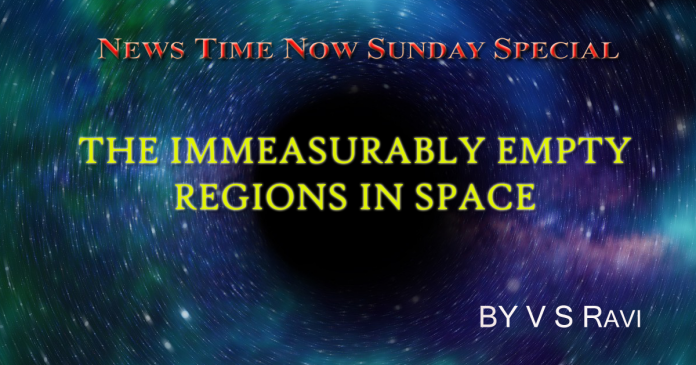In Shakespeare’s great play ‘King Lear, when Lear asks to hear what Cordelia can say to best what her sisters have said in their professions of love, the following dialogue takes place
King Lear: What can you say to draw a share more opulent than the rest?
Cordelia: Nothing, my lord
Lear: Nothing
Cordelia: Nothing.
Lear: Nothing will come of nothing. Speak again.
The word “nothing” occurs in the first act in King Lear –18 times in 14 speeches. “Nothing” is used a total number of 34 times in the play, in 29 speeches. Again in The Winter’s Tale Shakespeare uses it 34 times, but in only 26 speeches [one speech uses the word a whopping eight times]; Hamlet uses the word 30 times in 27 speeches.
But it is the first “nothing” exchange in King Lear which is Shakespeare’s most famous, and is what sets the main plot in King Lear into motion.
The use of the word nothing in the above plays have a deeper connotation than what is relevant to the immediate context of the stories. It is as though Shakespeare throughout these plays, particularly in King Lear, deliberately displays a certain preoccupation with the implications of the word “nothing”.
What is perhaps even stranger is that scientists of today seem to be equally obsessed with the idea of ‘nothing’!
“Nothing” is not so easy to find as you might imagine ! You might not have found what you were looking for, but you did find some thing else—a pen, a knife, a stone or even a dead insect. You have never found “nothing”.
Four physicists working at a space research facility for Astrophysics in the United States have found immense pockets of “nothing” far, far out in space. They have done it with what they describe as the “Z machine”, an electronic marvel of diodes, fibre optics, image intensifiers, and minicomputers that they built and attached to a large 60 inch Telescope on top of a mountain in Southern Arizona in the United States. For two years they patiently used the machine to measure the radiation coming from galaxies hundreds of millions of light-years away, and to estimate the size of the Universe. They have discovered long chains of galaxies stretching across the cosmos but also vast voids, yawning gulfs millions of light-years across that seem to contain nothing —no stars or galaxies, no planets, no clouds of gas — absolutely nothing( a light-year is the distance travelled by light at a velocity of 186000 miles per second . It is 5.88 trillion miles per year.
“Nothing” creates uncomfortable questions for astrophysicists. Where did it come from? Has it, been there since the birth of the Universe 13.8 billion years ago. Is that period long enough to form this immense concentration of “nothing” or are the abysses mere optical illusions of astronomical dimensions? Various theories have been put forth involving massive neutrinos, black holes or super-hot gas. But according to some astrophysicists the possibility that primordial concentrations of nothing are out there in space is fairly good.
Most astrophysicists appear to be somewhat embarrassed about the whole subject, wondering how they would be able to justify requests for research grants to study the consequences of “nothing” or how there could be an Award or Prize for outstanding work on “nothing”. But such an approach is not only unnecessary but also unwarranted. “Nothing” has always been of consequence in everyday life though sometimes as a source of frustration or disappointment—like the empty seats of a theatre for a playwright, or a missing limb of a dear relative or a friend or the absence of a loved one. But “nothing” has its good side too. Poets are aware that time spent doing nothing can be invigorating and rejuvenating. Keats derived poetic inspiration from evenings steeped in honeyed indolence. An artist may find that patches of nothing or empty areas of a painting or sculpture subtly enhance the beauty of the details that are visible on canvas or marble. There are practical uses also for “nothing” for which “vacuum” is another word. Vacuum is essential in industrial processes such a the welding of aluminium.
Practically everyone is familiar with vacuum pumps, vacuum tubes and vacuum cleaners.
We do however feel rather uncomfortable about vacuum. We also are inclined to believe that “nothing” is unnatural. Every schoolboy is told that all nature abhors a vacuum. On earth vacuum has to be produced and maintained artificially. But a large portion of the Universe is very good vacuum produced naturally by the action of gravitational forces that pull particles towards massive bodies such as the stars and galaxies, the earth and other planets, leaving the space between them almost empty. We need only to go several hundred miles above the Earth’s surface to find a natural vacuum thousands of times emptier than the “hard vacuum” produced in terrestrial laboratories.
The vastness and emptiness of space totally baffles human imagination. As explained by Nobel Laureate Francis Crick if we travel right across the solar system in a spaceship we would see nothing at all outside the window of the spaceship. Our main impression during the journey of about three and a half weeks at a speed of 1800 miles per second —a speed at which we could go from any place to any other place on the earth’s surface in less than seven seconds — would be of the almost total emptiness of space. Such a spaceship would take 430 years to reach the nearest star, (this figure would vary considerably depending on the velocity of the space ship) and would pass nothing significant on the way. In fact it would be travelling in vast deserts of emptiness with only a few gas molecules or occasional specks of dust to indicate that the ship is moving. It would take this the ship ten million years to cross the galaxy from side to side. The distances involved are totally beyond human comprehension!
Moving farther away from the Earth into interplanetary space we find regions a hundred billion times emptier than laboratory vacuums; the space between stars can be trillions of times emptier. If we go out beyond galaxies hundreds of millions of light-years away we come to the empty cells or what are described as “cosmic holes”—the emptiest space known to man, the deepest vacuum of all at least 10 quintillion times deeper than anything we can produce on earth.
These oceans of emptiness are so vast that they couldn’t have possibly been created in the same way as other vacuums in space; that is by the gravitational pull of galaxies. There simply has not been enough time since the Universe began to draw matter out of regions millions of light-years across.
Since no known theory of cosmic evolution accounts for this vast emptiness we may have to revise our views about some concepts of Physics. One alternative to the popular notion that the Universe gradually cooled after the “Big Bang” is the theory that after a initial explosion the super-hot cosmos cooled rapidly to absolute zero, then shattered into clumps of matter — ultimately galaxies, stars and planets—and vast chunks of “nothing”.
Scientists do not as yet know how and when the cosmic holes were created. Only another Einstein can solve this mystery, explain how in the beginning.
“The heavens and earth rose out of chaos”,
and thus radically alter our views on creation.


















































